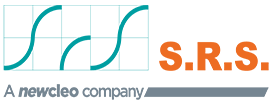List of Activities
In the following, typical design activities carried out by the Company are listed, grouped according to the internal Organization scheme. Working capability is also reported, together with main software used.
TECHNICAL AREA 1: MECHANICAL
In the frame of the technical area 1, the Company capabilities include:
- process definition, concept analysis and feasibility studies;
- design of complex mechanical systems, as nuclear systems (primary circuit components, reactor auxiliary systems, nuclear and non-nuclear), heating ventilation and air conditioning systems, liquid/solid/gaseous waste treatment facilities, fire-control systems and mechanical systems in general as per international industrial standards as well as nuclear safety rules, regulations and standards (ASME, ANSI, APIE, IEEE, IAEA, EUR, DIN, UNI EN, ASME AG-1, ISO, NUREG, ANS, etc.);
- structural analyses as per national standards (UNI, PED);
- structural analyses as per US and international non-nuclear and nuclear standards (ASME III, ANSI, ASME AG-1, NUREG, ANS);
- non-linear, large-displacement structural analyses;
- preparation of technical specifications, engineering analyses reports, project development time schedules and cost estimates.
The permanent staff in the area includes 40 persons/year, with a productive capacity of at least 65.000 hours/year.
A special capability in research and development has to be pointed out (including also the associated realization and testing of prototypes), for the development of innovative components and systems for use in fluid systems or robotics, with special expertise in heat transfer and fluid dynamics (innovative HX, valves, etc.).
Software and computer programs normally used include:
- AVEVA PDMS 12.0 (Piping, Equipment and HVAC and Ducting Functions);
- PIPE STRESS 3.6.0
- GT STRUDL 29
- DUAL P 1.6.7
- CPI WIN;
- LS DYNA 9.71
- MSC NASTRAN 2500
- ABAQUS 6.7-1 (Implicit and Explicit);
- RADIOSS
- ANSYS
- PATRAN
- SOLIDWORKS
- CATIA V5
- AUTOCAD 2009
The COMPANY staff is also trained in:
- the use of Intergraph PDS application for 3D mechanical design
- the use of Intergraph CAESAR II software for pipe stress analysis
TECHNICAL AREA 2: CIVIL
In the frame of the technical area 2, the Company capabilities include:
- architectural design;
- reinforced concrete structural design;
- steel structure design;
- structural analyses as per Italian rules and regulations;
- structural analyses as per US regulation (ACI) and nuclear standards;
- non-linear structural analyses, static and dynamic (time histories);
- preparation of technical specifications, engineering calculation reports, project development time schedules and cost estimates.
The permanent staff in the area includes 25 persons/year, with a productive capacity of at least 40.000 hours/year.
Software and computer programs normally used include:
- SAP 2000;
- STRAUSS;
- NOLIAN;
- MSC NASTRAN 2500 (incluso LS DYNA 9.71);
- HKS ABAQUS 6.7-1 (IMPLICIT ED ESPLICIT);
- GD STRUDEL 29;
- ANSYS;
- AVEVA PDMS 12.0 (STRUCTURAL & ARCHIT. FUNCTIONS);
- AVEVA NUCLEAR CONCRETE DESIGN;
3-D Software
- AVEVA PDMS 12.0 (STRUCTURAL & ARCHIT. FUNCTIONS)
- AVEVA NUCLEAR CONCRETE DESIGN
- ALLPLAN
TECHNICAL AREA 3: ELECTRICAL
In the frame of the technical area 3, the Company capabilities include:
- electric power systems architecture design;
- electrical transformers selection;
- design of MV/HV panels, power control centres, motor control centres and power distribution centres;
- primary distribution and secondary distribution network design and electrical cable integrity verification;
- auxiliary electric system design and process integration;
- preparation of technical specifications, engineering calculation reports, project development time schedules and cost estimates.
The permanent staff in the area includes 15 persons/year, with a productive capacity of at least 25.000 hours/year.
Software and computer programs normally used include:
- Ampere;
- AVEVA Cable Design;
TECHNICAL AREA 4: AUTOMATION
In the frame of the technical area 4, the Company capabilities include:
- process control design and control system architecture definition;
- design of distributed control systems (DCS) and peer to peer systems;
- relay control systems design;
- identification of control systems instrumentation: sensors and actuators;
- signal distribution network design;
- cables integrity and cable anchors stability verification, definition of component qualification process;
- preparation of single line diagrams, connection diagrams, installation schemes;
- preparation of technical specifications and cost estimates.
The permanent staff in the area includes 7 persons/year, with a productive capacity of at least 12.000 hours/year.
TECHNICAL AREA 5: NUCLEAR
The technical capabilities of the Company in the nuclear area deal with all the aspects of nuclear safety and radiological protection for nuclear installations, in particular:
- Nuclear installation safety analyses, including:
- Identification and selection of initiating events;
- Probabilistic, deterministic and hybrid safety assessments;
- Calculation of doses and radiological impact on workers and population.
- Classification of structures, components and systems;
- Criticality and burn-up calculations; fuel loading strategies;
- Reliability analysis of reactivity control systems, power distribution calculation in sub-critical and critical systems, reactivity coefficients calculation;
- Radiation shielding design;
- Evaluation of radiation doses to exposed individuals and population;
- Evaluation of integral radiation dose to materials;
- Fluid-dynamic and thermal-hydraulic calculations, in transient and steady state conditions, in support to core and system design, in operational and accident scenarios.
The permanent staff in the area includes 7 persons/year, with a productive capacity of at least 12.000 hours/year.
The analyses are carried out according to national and international standards and rules, namely ANS; ANSI; ASME, IEEE, DOE, NUREG, SMACNA, as well as ISO, IAEA, ICRP, CEI IERC international standards and UNI and UNI EN national standards.
Software and computer programs normally used include:
- MCNP 4C2;
- Frames V1.6;
- Microshield 8;
- Microshine 2.1;
- Raddecay 4;
- Scale 6.0;
- NEWT;
- TRITON;
- RELAP 5;

